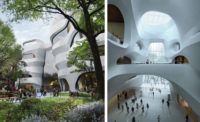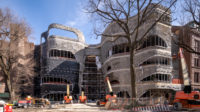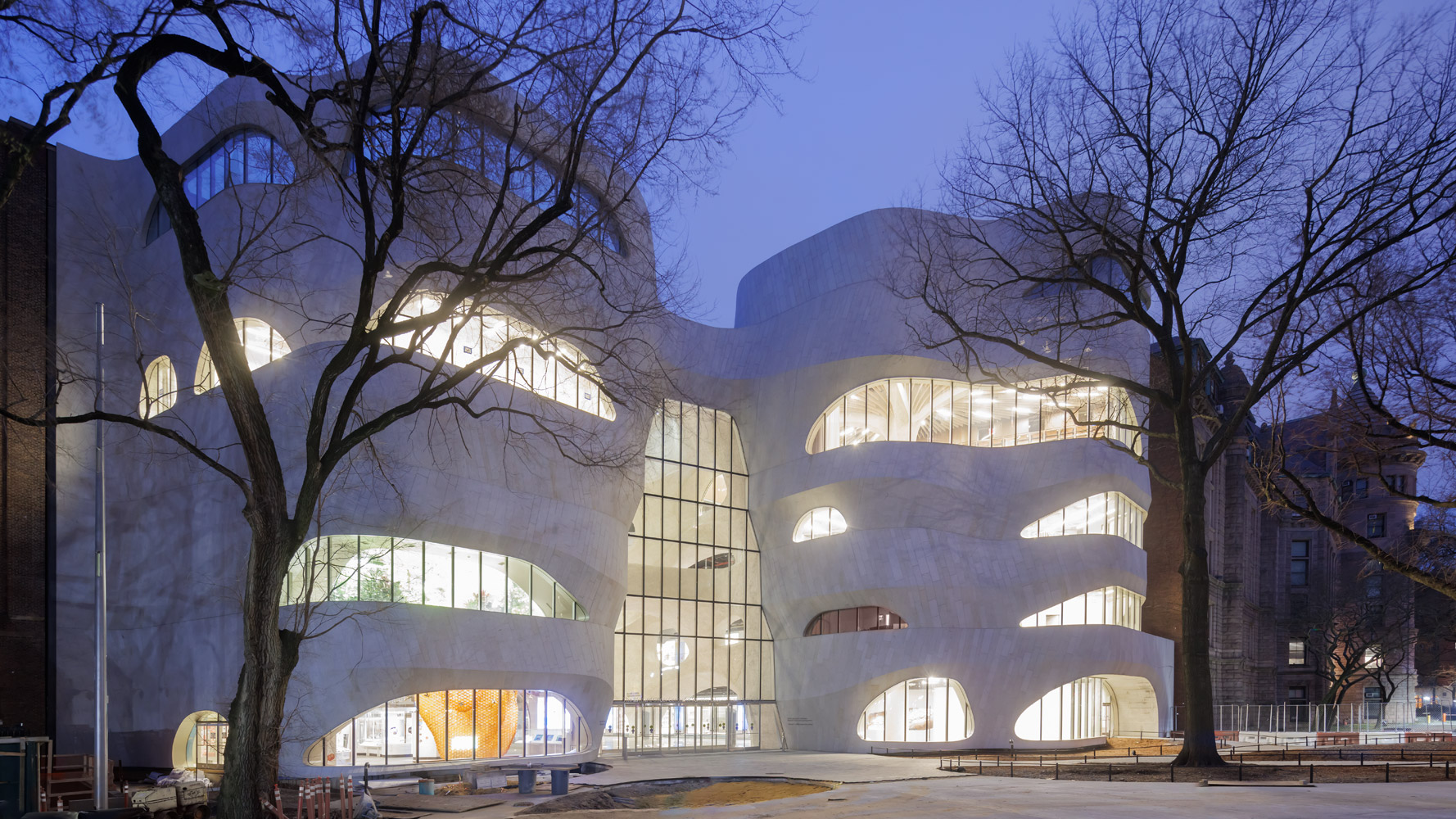Studio Gang Delivers Architecture Inspired by Nature at the American Museum of Natural History in New York

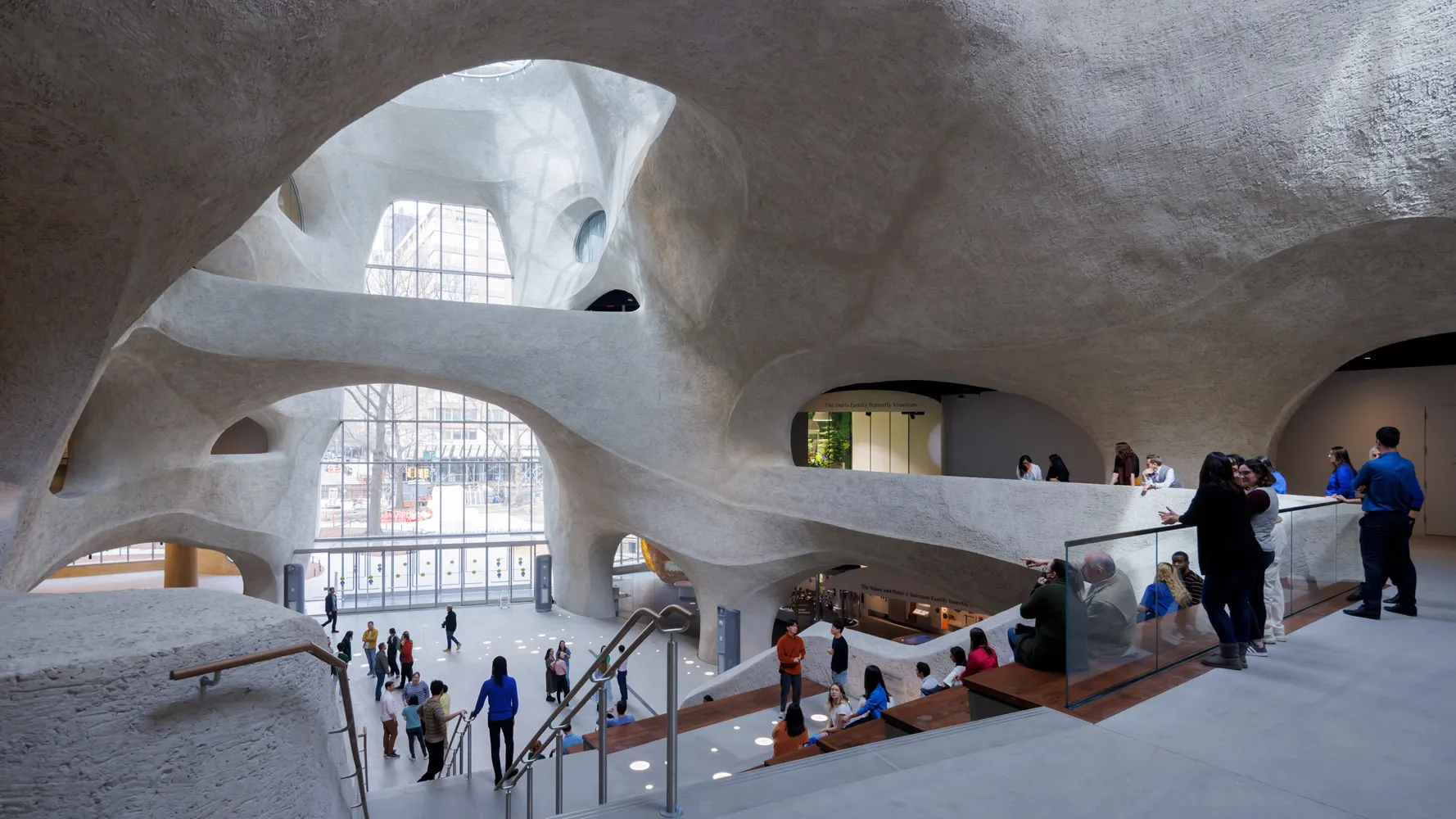
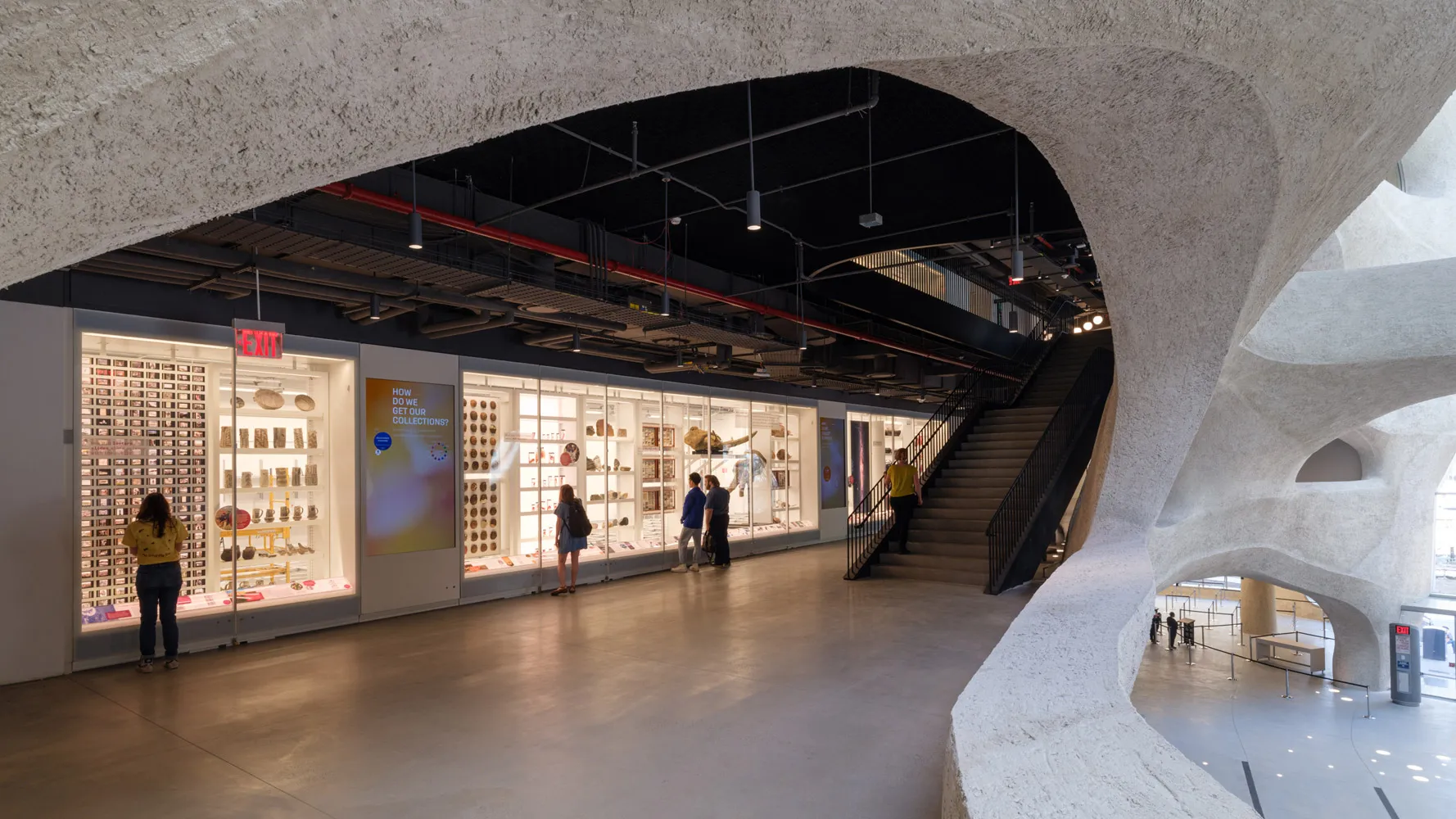
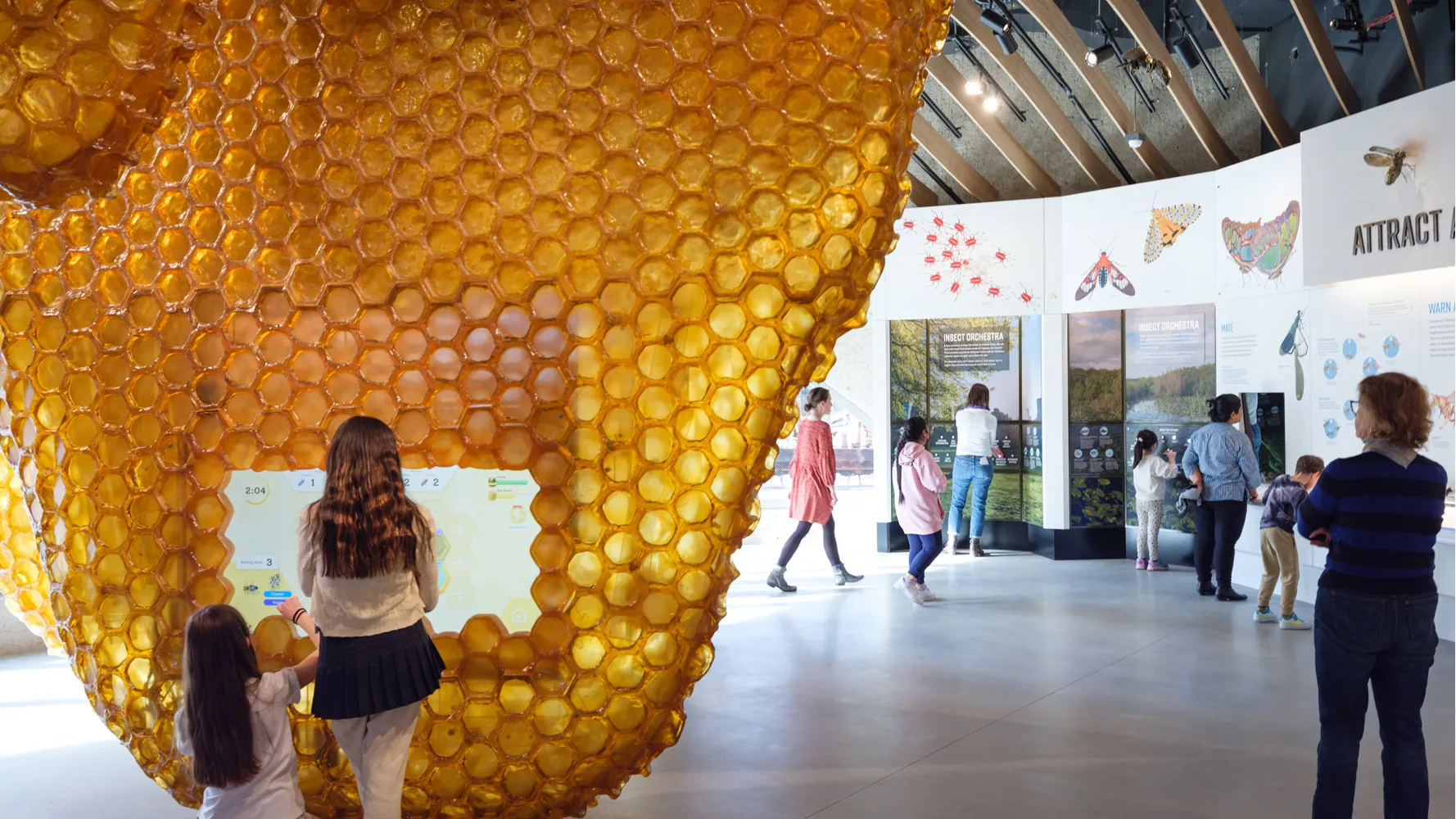
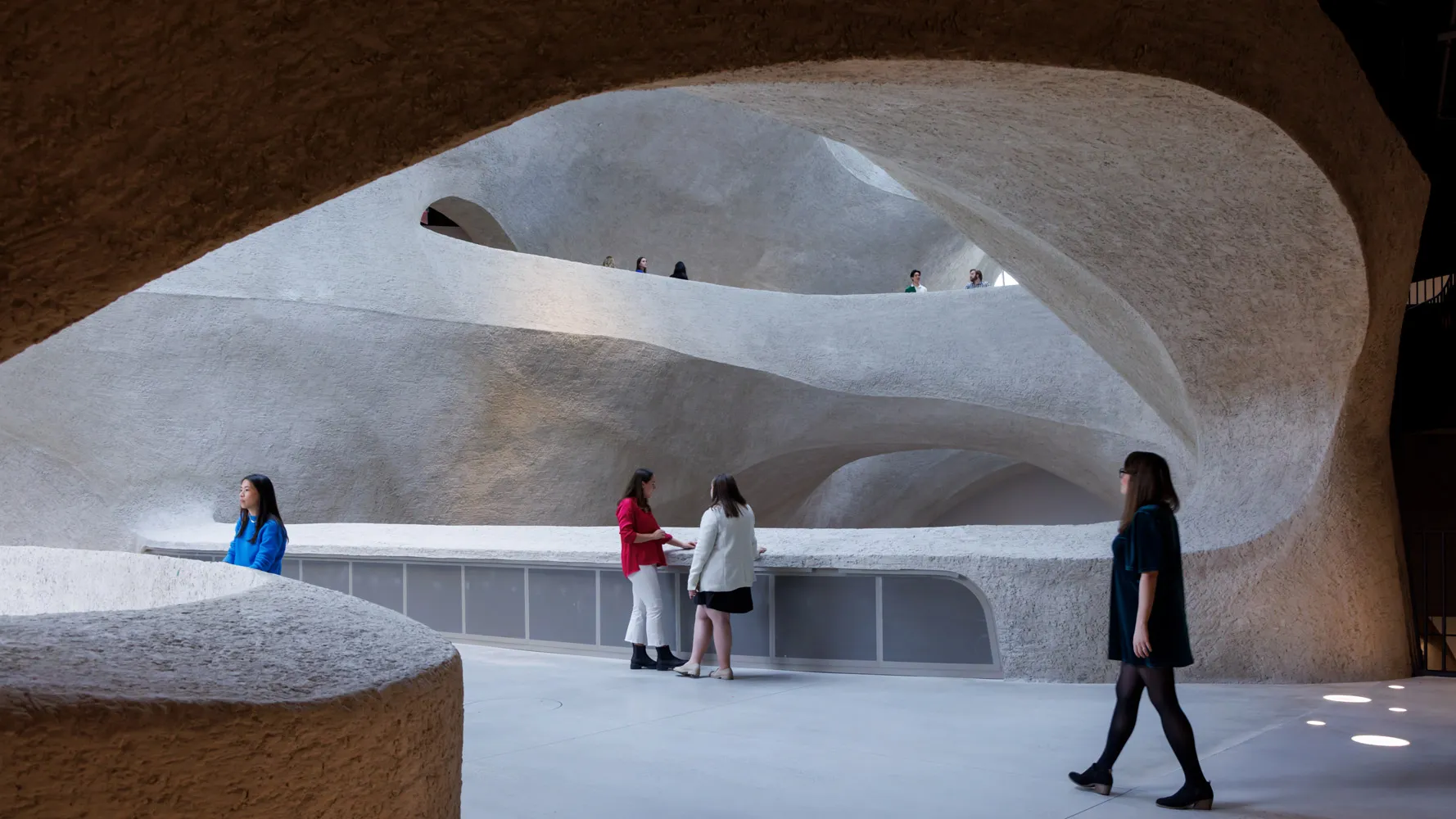
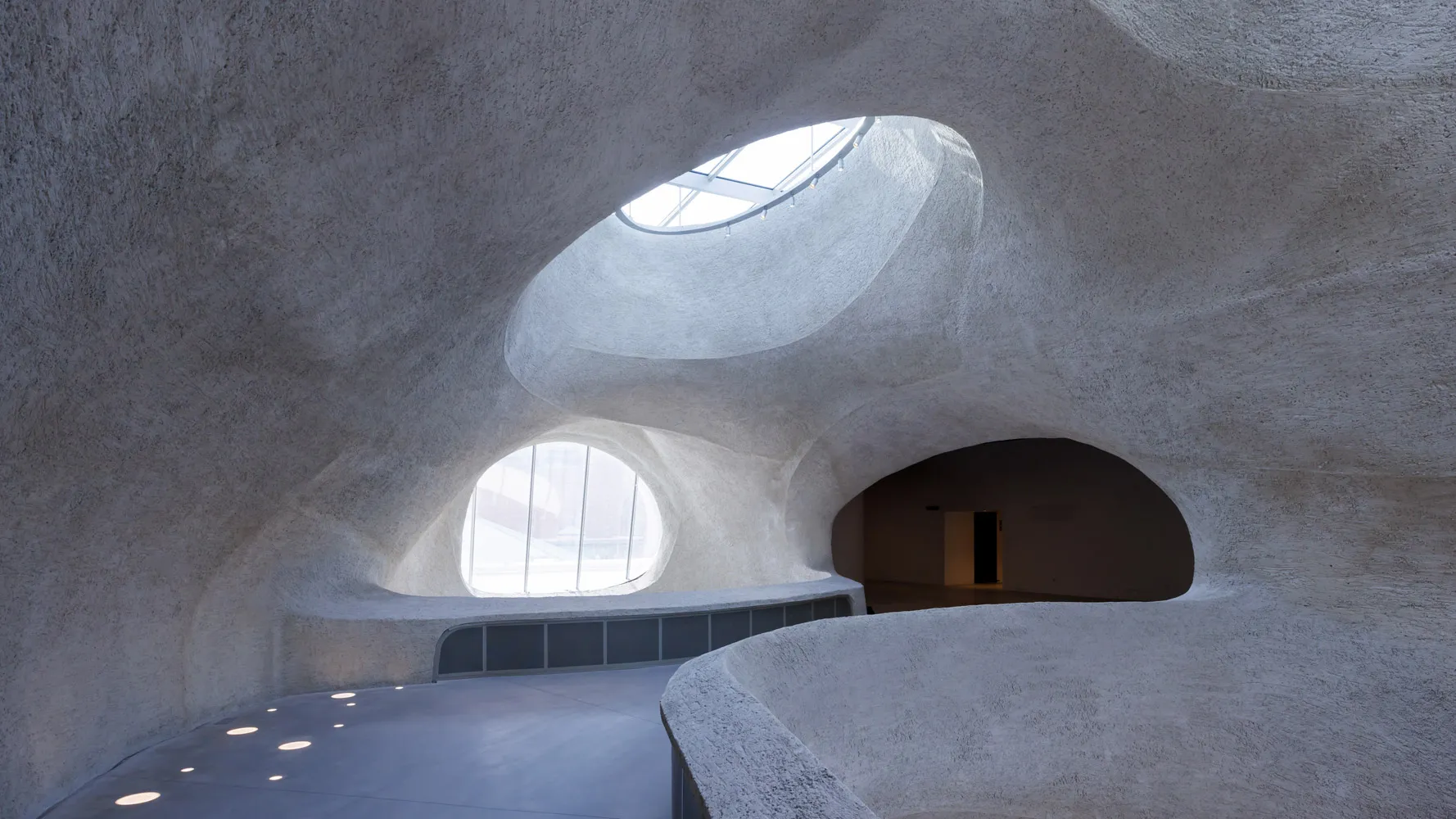
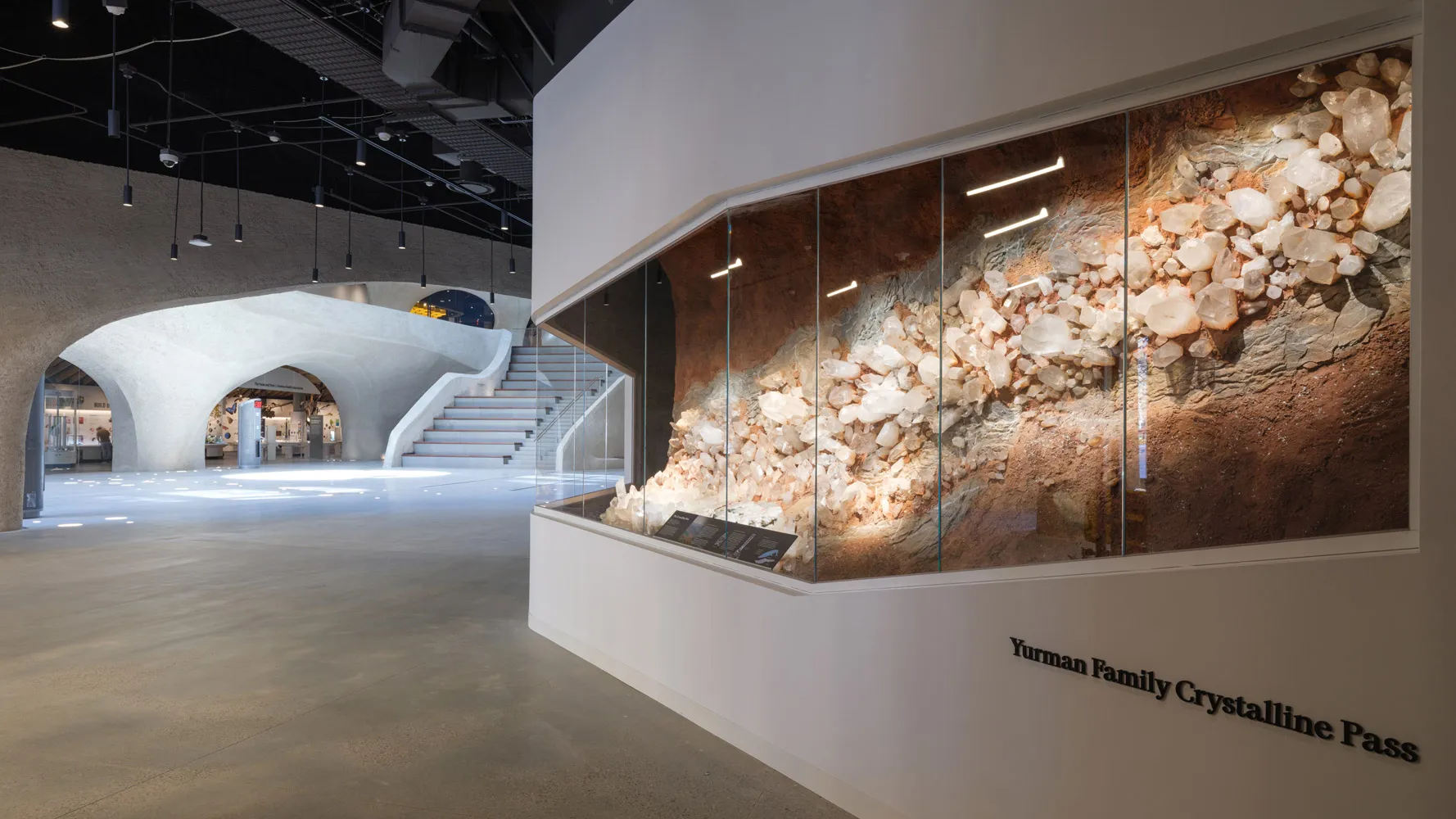
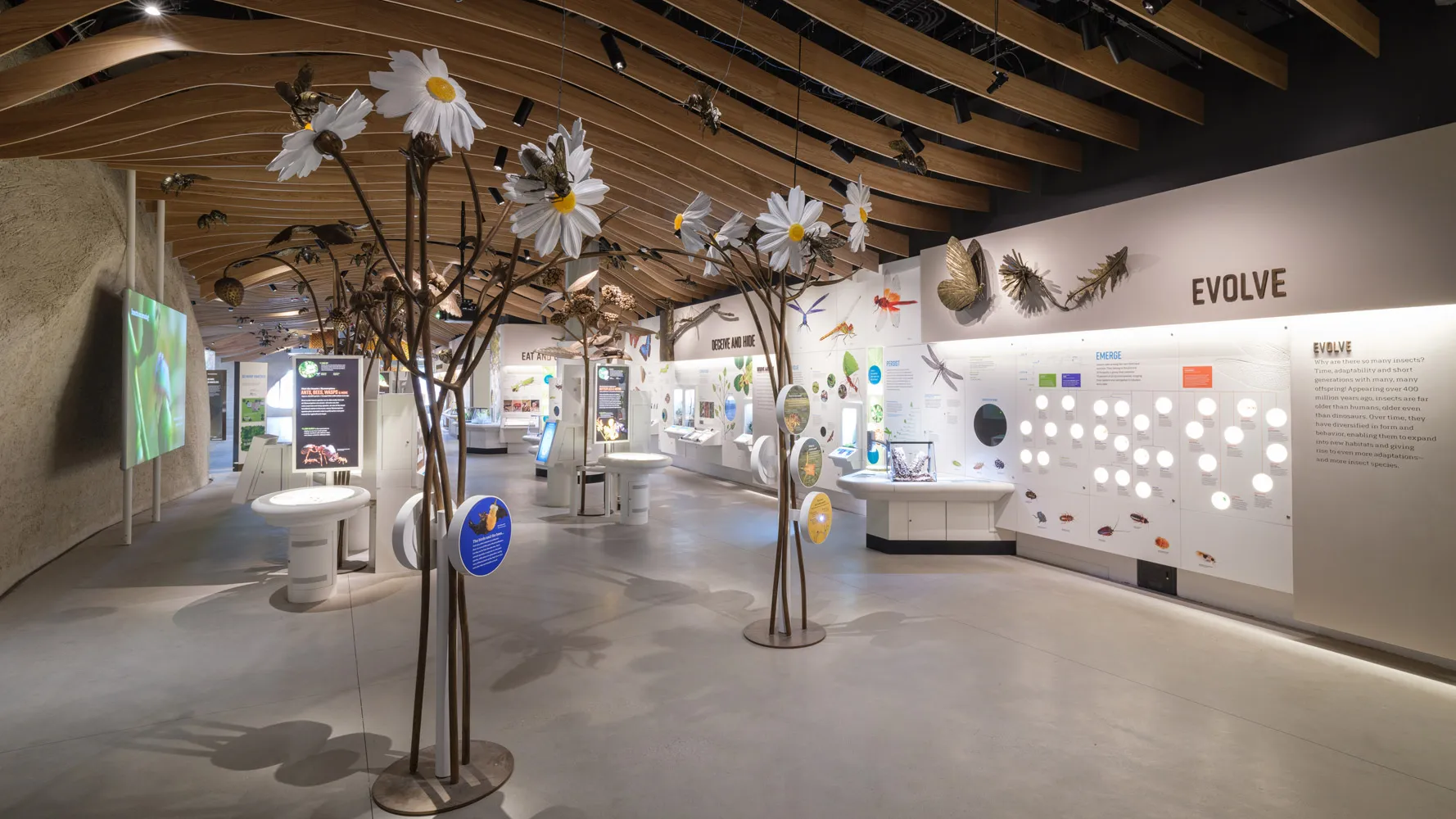
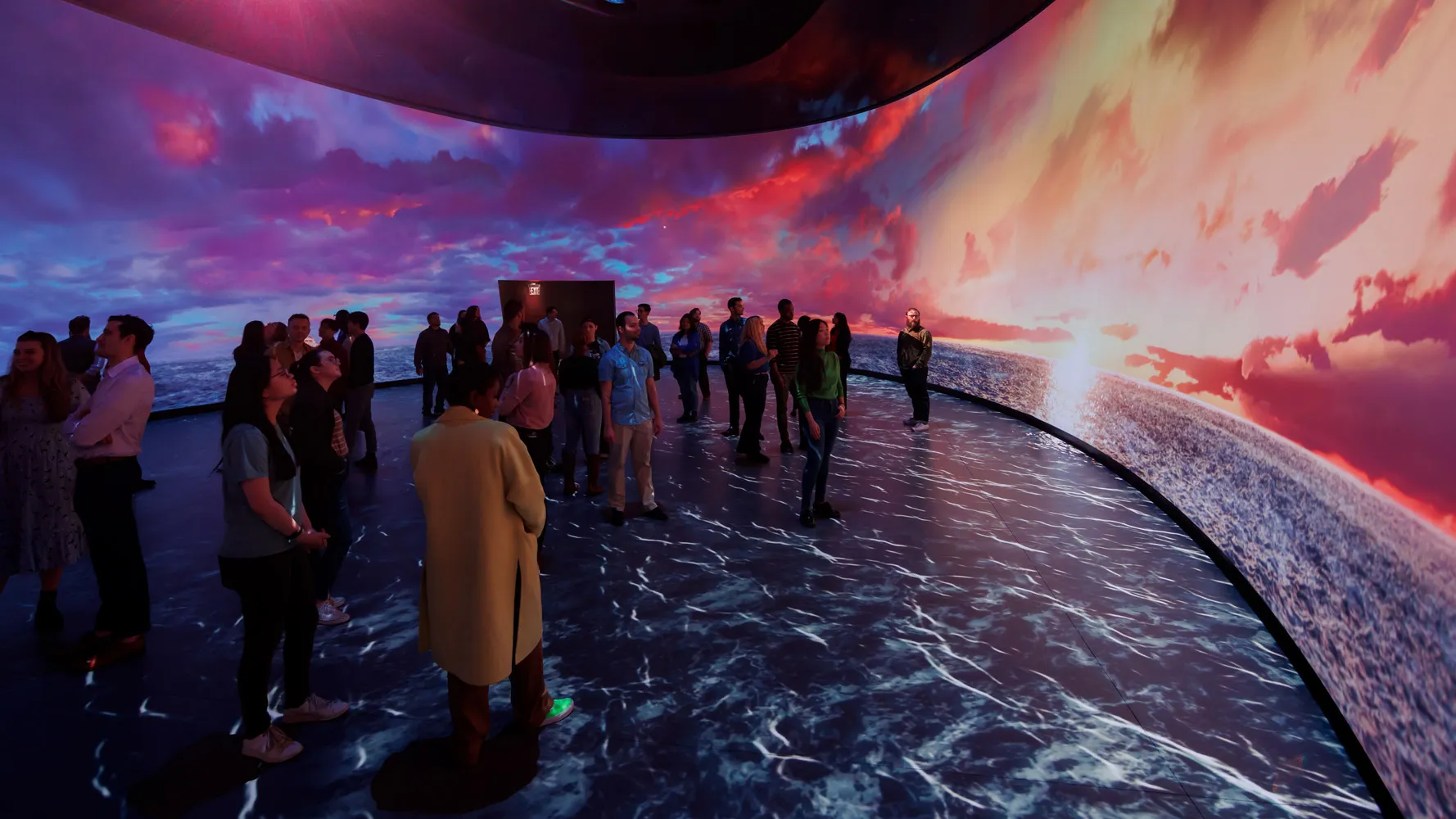
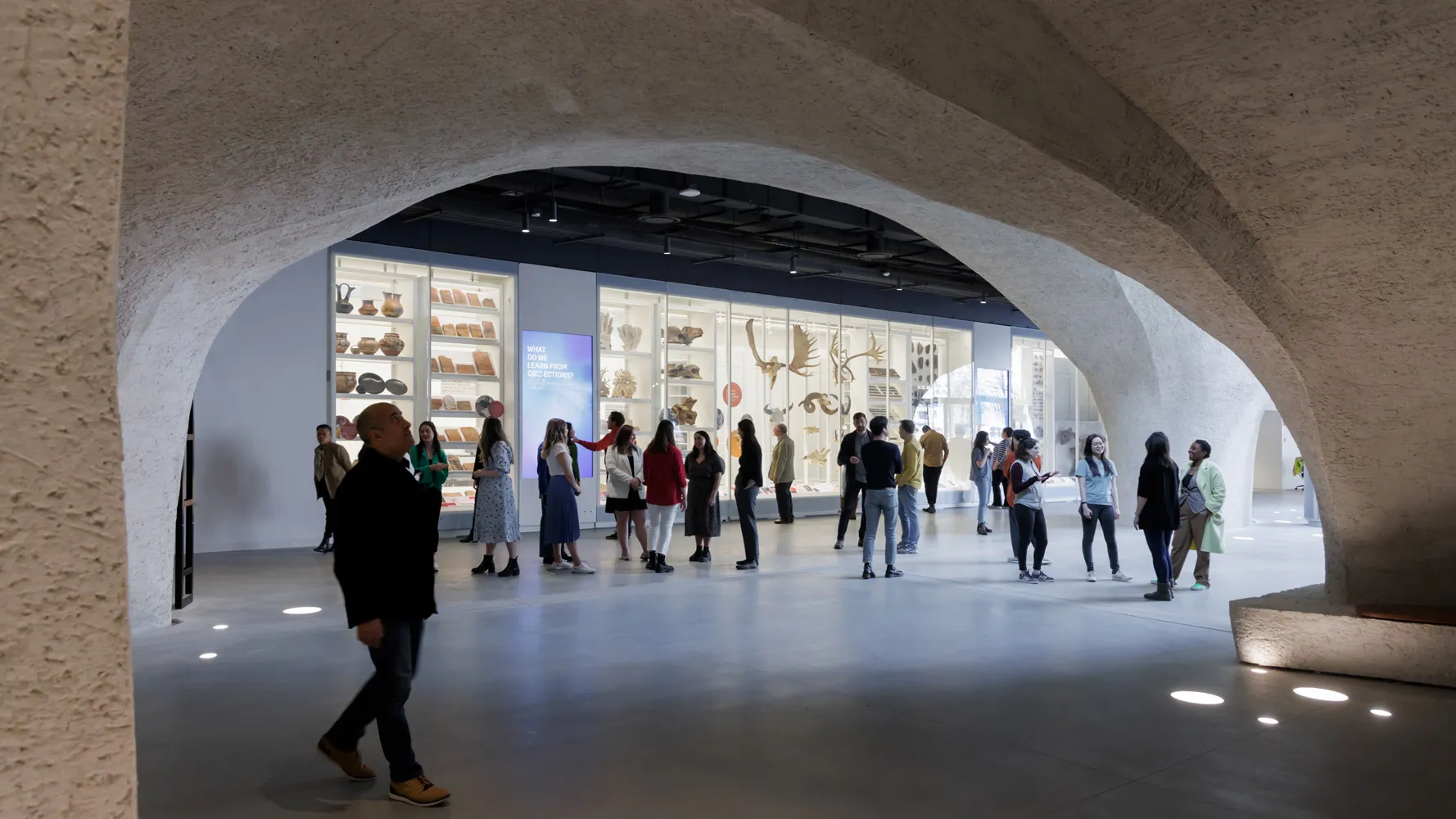










Architects & Firms
Time is the force driving everything at the American Museum of Natural History (AMNH). From its jaw-dropping dinosaur skeletons and multi-million-year-old fossils to its displays on evolution, the museum on Manhattan’s Upper West Side reveals the wonders of our planet and the universe through the lens of time. Studio Gang’s design for the new Gilder Center for Science, Education, and Innovation expresses that same hidden force, evoking the form of an ancient canyon sculpted by wind and water over the course of many, many years. First announced in 2014, the 230,000-square-foot, $465-million Gilder Center serves as a new gateway on the west side of the 149-year-old building. What had once been a tucked-away back entry off Columbus Avenue and a quirky piece of Theodore Roosevelt Park has been transformed by Jeanne Gang and her team into an immediately recognizable feature attraction.

Photo © Iwan Baan
With its bulging facade clad in 18-by-9-foot panels of angled strips of Milford pink granite and punctuated by a five-story glazed wall and curvaceous windows, the Gilder sets itself apart from the existing dark stone-and-brick buildings to which it is attached. But it plays nice with its older neighbors, matching the height of the Neo-Romanesque building to its south and aligning its floors with those of that structure too. Its masonry courses recall the layers of Manhattan schist on which it sits. And its pink granite comes from the same source as the stone on AMNH’s grand entrance on Central Park West, on the opposite side of the four-block campus—a material echo that will resonate with visitors of all ages who have made many trips to the institution.

The Gilder Center connects 10 buildings across the museum’s four-block campus, establishing continuous pathways to enhance visitor circulation. Photo © Iwan Baan
As soon as you step into the Gilder Center, you’re pulled into a five-story high, 10,000-square-foot atrium topped by a set of large oval skylights. There are no right angles here. Instead, you’re enveloped by a self-supporting, cave-like structure made of shotcrete blasted onto an undulating network of rebar without the use of disposable formwork. Gang toured train tunnels under construction to see how shotcrete has been used in large projects. But the Gilder atrium has a more organic, non-Euclidian geometry that generates a wide-eyed wonder in most visitors. “I’ve always been fascinated by spaces of adventure, like canyons and gorges,” says Gang. Such places encourage flow and movement, which are important in what is essentially a giant entry lobby. “We’re constantly investigating structures in nature,” says Weston Walker, a design principal at Studio Gang and the partner in charge of the firm’s New York office. The architects also looked at Eero Saarinen’s models of the TWA Terminal at JFK Airport and Antoni Gaudí’s models of La Sagrada Família in Barcelona, curious about how forms can merge and connect.
The role of a natural history museum in our society has never been more important, says Ellen V. Futter, president emerita of AMNH, who stepped down as president of the institution in April after nearly 30 years in that role. Researching, collecting and exhibiting science are essential tasks in the wake of Covid and “in a post-truth era,” she states. Gang’s design “invites references to the natural world and inspires curiosity,” says Sean M. Decatur, the new president of AMNH. “It’s a place where people will want to wander around and explore.”

1

2
Photos by Alvaro Keding, © AMNH
Though fluid in form, the Gilder Center reinforces the axial arrangement of the museum’s original plan prepared in 1872 by Calvert Vaux and J. Wrey Mould and aligns its atrium with the grand entry hall on the opposite side of the campus. Knitting together a complex that had grown piecemeal during 15 decades was a key challenge. The west sector of the museum, in particular, was notorious for its U-shaped circulation and dead-ends that charmed regular visitors but maddened everyone else. Gang’s addition connects to nine other buildings at 33 different points, establishing an uninterrupted flow throughout the campus. Making her building porous to the rest of the museum and to the city was important, says Gang. Now visitors in the Gilder atrium can look out toward 79th Street and, on clear days, see the sun set past the Hudson River.
Anchoring the center of the Gilder atrium, a grand stair takes you up two floors and provides stepped seating on one side so you can relax or listen to a presentation on the ground level. On the south side of the space, glass cases with 4,000 items from the museum’s collection rise three stories in a gesture reminiscent of Gordon Bunshaft’s glass book tower inside the Beinecke Rare Book Library at Yale and one that expresses Gang’s goal of using architecture to reveal the museum’s mission. On the north side of the ground floor, visitors discover an insectarium with displays of live ants and insects, as well as a giant model of a beehive. On the floor above, a vivarium allows museum-goers to walk among fluttering butterflies and learn about these fascinating creatures. An immersive and interactive experience called Invisible Worlds surrounds visitors on the third floor with moving images of oceans, skies, the microscopic, and the galactic. On the fourth floor, a reading room with a mushroom-shaped column at its center offers an elegant place to relax and enjoy views of Theodore Roosevelt Park. Ralph Appelbaum Associates designed all the exhibits in the new building.

3

4
Photos © Iwan Baan
When plans for Gilder were first announced in 2014, some residents of the Upper West Side protested changes to the park and the loss of some trees. Making an omelet requires breaking some eggs. In this case, that meant tearing down some unglamorous structures and redoing the design of the outdoor spaces along Columbus Avenue. Reed Hilderbrand, the landscape architects for the project, have created a gracious entry sequence and an expanded lawn on the north side of the block with paths, benches, and native species, including 23 new canopy and understory trees.
Like natural history, architecture is a long game that must stand the test of time. Studio Gang’s Gilder Center is brand new and delivers a bold message that change can be both dramatic and sensible. No one knows how we will view it 10 or 100 years from now. But at this fraught moment when public health officials are attacked for doing their jobs and climate change is questioned by some political leaders, the Gilder Center makes science exciting, captivating the young minds that will shape the future.

Photo by Alvaro Keding, © AMNH


